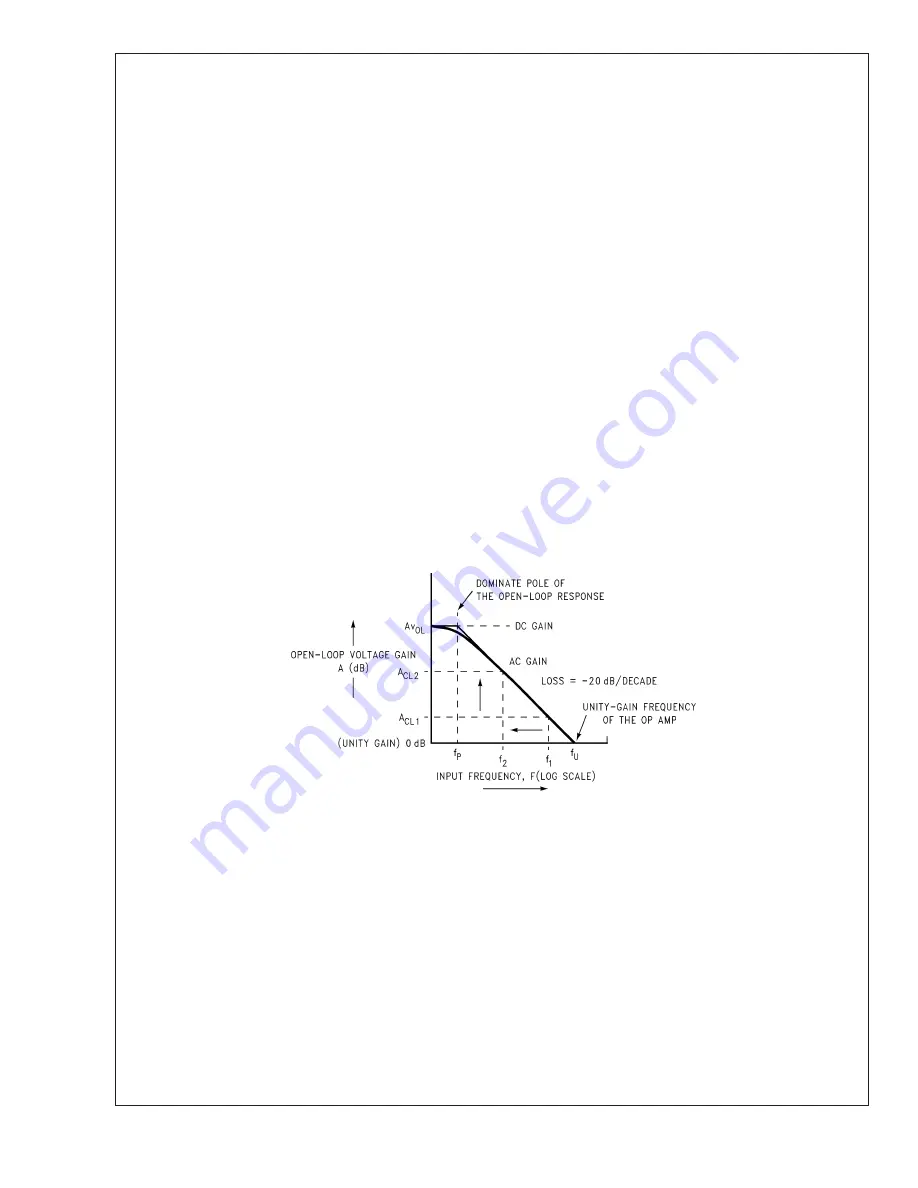
Definition of Terms
(Continued)
applies with the output transistors conducting alternately at a
high enough frequency that the peak capability of neither
transistor is exceeded.
Power Bandwidth:
The power bandwidth of an audio am-
plifier is the frequency range over which the amplifier voltage
gain does not fall below 0.707 of the flat band voltage gain
specified for a given load and output power.
Power bandwidth also can be measured by the frequencies
at which a specified level of distortion is obtained while the
amplifier delivers a power output 3 dB below the rated out-
put. For example, an amplifier rated at 60W with
≤
0.25%
THD + N, would make its power bandwidth measured as the
difference between the upper and lower frequencies at which
0.25% distortion was obtained while the amplifier was deliv-
ering 30W.
Gain-Bandwidth Product:
The Gain-Bandwidth Product is
a way of predicting the high-frequency usefulness of an op
amp. The Gain-Bandwidth Product is sometimes called the
unity-gain frequency or unity-gain cross frequency because
the open-loop gain characteristic passes through or crosses
unity gain at this frequency. Simply, we have the following
relationship: A
CL1
x f
1
= A
CL2
x f
2
Assuming that at unity-gain (A
CL1
= 1 or (0 dB)) fu = fi =
GBWP, then we have the following: GBWP = A
CL2
x f2
This says that once fu (GBWP) is known for an amplifier,
then the open-loop gain can be found at any frequency. This
is also an excellent equation to determine the 3 dB point of a
closed-loop gain, assuming that you know the GBWP of the
device. Refer to the diagram on the following page.
Biamplification:
The technique of splitting the audio fre-
quency spectrum into two sections and using individual
power amplifiers to drive a separate woofer and tweeter.
Crossover frequencies for the amplifiers usually vary be-
tween 500 Hz and 1600 Hz. “Biamping” has the advantages
of allowing smaller power amps to produce a given sound
pressure level and reducing distortion effects produced by
overdrive in one part of the frequency spectrum affecting the
other part.
C.C.I.R./A.R.M.:
Literally: International Radio Consultative Committee
Average Responding Meter
This refers to a weighted noise measurement for a Dolby B
type noise reduction system. A filter characteristic is used
that gives a closer correlation of the measurement with the
subjective annoyance of noise to the ear. Measurements
made with this filter cannot necessarily be related to un-
weighted noise measurements by some fixed conversion
factor since the answers obtained will depend on the spec-
trum of the noise source.
S.P.L.:
Sound Pressure Level — usually measured with a
microphone/meter combination calibrated to a pressure level
of 0.0002 µBars (approximately the threshold hearing level).
S.P.L. = 20 Log 10P/0.0002 dB
where P is the R.M.S. sound pressure in microbars.
(1 Bar = 1 atmosphere = 14.5 lb/in
2
= 194 dB S.P.L.).
01183316
LM3886
www.national.com
22


































